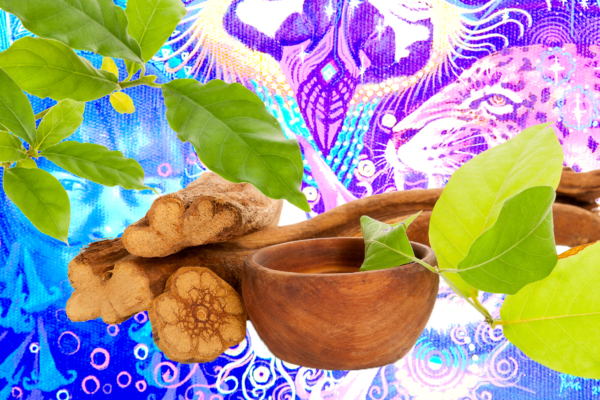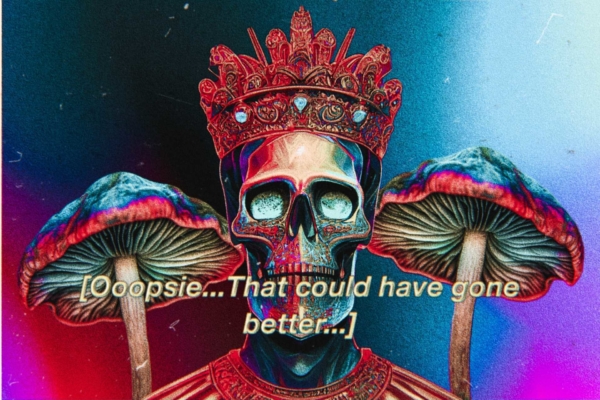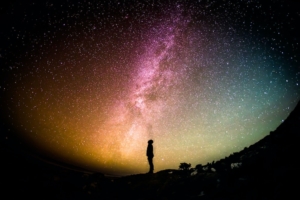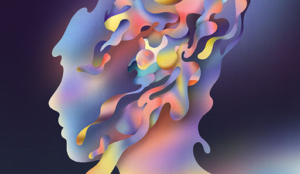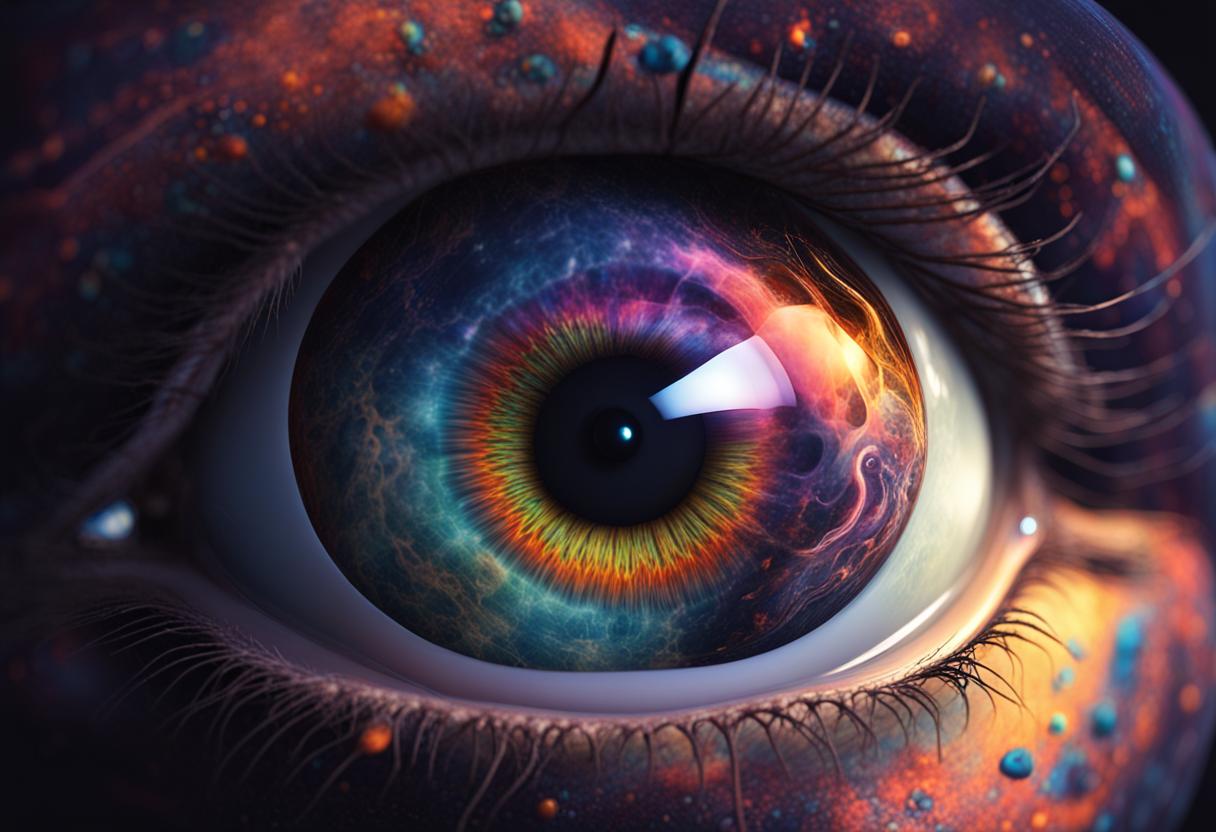
If you’ve ever taken a psychedelic journey in nature, or near a beach, you can probably recall your come-up and the sudden feeling of being able to distinctly see every single grain of sand, or each precise pattern of a tree bark, allowing you to enjoy nature at an unparalleled level of detail.
One of psilocybin’s most striking effects is the sudden visual clarity it gives individuals shortly after the come-up. This phenomenon is also reported when individuals microdose or consume low doses of psychedelics, typically lower than 1 gram since higher doses can lead to stronger subjective effects, such as full-blown hallucinations, mystical experiences and communication with beings from other realms brought forward by our collective unconscious. This increase in our visual acuity enables us to see clearer and become more observant of small details.
A slight shift in perspective can make even the most mundane objects fascinating and make nature’s beauty even more spectacular. We’ve delved into this phenomenon, which hasn’t been extensively studied yet, to find possible causes and unexpected benefits.
So… Why Does This Happen?
- Psilocybin alters the way the thalamus processes and relays stimuli.
- If this happens, our visual system may receive more stimuli than usual, making objects more detailed.
- Psilocybin also binds strongly to 5HT2A receptors, making our visual cortex more sensitive to visual stimuli.

One possible reason for this phenomenon is psilocybin’s interaction with the thalamus, the section of our brain that receives sensory information and relays it to different brain areas for processing.
The thalamus can also filter or shut out stimuli it classifies as irrelevant to make information processing more efficient. Some of these stimuli may be minute visual details that limit our perception of an object.
Psilocybin disrupts thalamic functions, preventing it from filtering stimuli correctly and causing it to send more information than needed for normal functioning.
In higher doses, this can lead to overloads of stimuli that can cause hallucinations. In low doses, the augmented flow of information has the potential to offer a temporary enhancement in vision.
Andrew Huberman offered another interpretation of this phenomenon in an episode of his podcast, Huberman Lab. He’s a renowned neuroscientist and professor at Stanford School of Medicine, and his podcast discusses the latest neuroscience research.
Huberman explains that psilocybin binds strongly to our serotonin 2A receptors due to their similar chemical structures, and this bond leads to alterations in perception, mood, and cognition.
A large amount of our brains’ 5HT2A receptors are located in the neo-cortex, which includes the prefrontal cortex and areas that mediate sensation.
One specific area has the largest concentration of 5HT2A receptors: the visual cortex. Under the effects of psilocybin, our visual cortex becomes more sensitive to visual stimuli, which is why patterns and shapes look more defined, movement looks more fluid, and colors become more vivid.
This also partially explains why psilocybin produces hallucinations, as it can disrupt how our brain processes visual information, especially in higher doses.
Unexpectedly, psilocybin can potentially make long-lasting improvements to a user’s vision, which we’ll discuss in the following section.
Psychedelics as a Possible Cure for Color Blindness
- Psilocybin may have temporarily modified the way color-blind patients perceive color.
- The data comes from a case report and the 2017 Global Drug Survey, although both studies have their flaws.
- This phenomenon needs further investigation to determine its potential.
A recent case report by Brian S. Barnett et al. studied a case of one patient with color vision deficiency (CVD), colloquially known as color blindness, who reported an improvement in his CVD after consuming a 5-gram dose of psilocybin mushrooms.
The subject had taken the Ishihara test, which consists of 21 plates with colored dots arranged in patterns to form numbers, before taking his initial dose. He scored 14 out of 21, indicating mild color blindness. He proceeded to retest himself 12 and 14 hours after his psychedelic experience, scoring 15 the first time and 18 the second time.
A score above 17 indicates normal vision, suggesting that he recovered his ability to distinguish colors. He retested himself eight days after his trip, scoring 19, and four months later, bumping down to 18 again.
The researchers invited him to his lab once they took note of his case to test him again. At that point, more than a year passed since his psychedelic trip and subsequent testing. When tested in the lab, he scored 16 out of 21, indicating slight color blindness.
Barnett et al. theorized that psilocybin may have modified how the subject’s brain processes color and widened his perception of it by making new connections in his brain.
The 2017 Global Drug Survey queried psychedelic users on whether their vision had changed after taking mushrooms or LSD. According to their findings, 47 of the respondents were color blind to a degree, and half of the 47 reported improvements with their CVD, while the other half had no improvements.
JEC Anthony et al. also pointed at psilocybin’s binding to 5HT2A receptors as a possible cause of these improvements in color blindness. Its ability to reorganize neural connections and make new ones could allow users to experience a wider spectrum of colors that were out of reach before.
For more information: Could Psychedelics Cure Color Blindness? New Data Sees a Bright Future | Psychedelic Spotlight
These cases open the door for more investigation regarding psilocybin’s ability to temporarily improve CVD symptoms, even though this condition stems from genetic defects.
Conclusion
There’s still much to learn about how low doses of psychedelics can improve our vision, and future studies could compare visual acuity in people on low doses of psilocybin vs. placebo. Luckily, psychedelic research is advancing rapidly, and we can hope that the answer to these questions is right around the corner.
In the meantime, we can keep taking advantage of psilocybin’s well-known benefits to our mood, focus, and motivation.
You might be interested in: How Magic Mushrooms Affect the 5 Senses
References
- Gaddis, A., Lidstone, D. E., Nebel, M. B., Griffiths, R. R., Mostofsky, S. H., Mejia, A. F., & Barrett, F. S. (2022). Psilocybin induces spatially constrained alterations in thalamic functional organization and connectivity. NeuroImage, 260, 119434. https://doi.org/10.1016/j.neuroimage.2022.119434
- Barnett, B. S., Sweat, N. W., & Hendricks, P. S. (2023). Case report: Prolonged amelioration of mild red-green color vision deficiency following psilocybin mushroom use. Drug Science, Policy and Law. https://doi.org/10.1177/20503245231172536
- Anthony, J., Winstock, A., Ferris, J., & Nutt, D. (2020). Improved colour blindness symptoms associated with recreational psychedelic use: Results from the Global Drug Survey 2017. Drug Science, Policy and Law. https://doi.org/10.1177/2050324520942345

